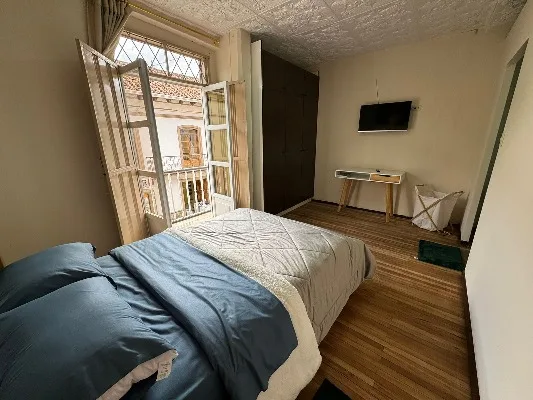Covid-19 cases surge in Panama as the country leads the world in infections per capita
In the weeks since Panama loosened restrictions in an attempt to gradually reactivate its economy, new coronavirus infections have surged, especially in the densely populated poorer neighborhoods of its capital.

An informal banana vendor pushes a cart in Panama City.
Since late March, Panama had managed to maintain its daily new infections below 200 with a strict lockdown. But this month those numbers have nearly tripled and reported deaths are coming twice as fast. A Friday report showed the country leads the world in number of Covid-19 infections per 100,000 population, edging out Brazil, Israel and the U.S. for the dubious honor.
Amid the worsening situation, President Laurentino Cortizo replaced is health minister Wednesday without explaining why.
“We all knew this was going to happen,” said Dr. Xavier Sáenz-Llorens, one of the advisers of the Health Ministry’s pandemic team. He was referring to the increase in infections once measures were eased. “What we didn’t know was the magnitude.”
Emblematic of the surge was the announcement Thursday that the country’s most famous athlete, Roberto “Manos de Piedra” Durán, a former world champion in four different weight classes, had tested positive for the coronavirus. His son Robin Durán confirmed the news about his 69-year-old father, who retired from boxing in 2001.
In mid-May, Panama allowed e-commerce, fishing and service providers like plumbers, electricians and mechanics to return to work. At the start of June, it added non-metallic mining, public infrastructure, as well as industrial sectors like textiles, chemicals, oil refineries and pharmaceuticals.

A cyclist rides on an empty sidewalk in Panama City.
Dr. Jorge Luis Prospero, former representative of the Pan American Health Organization in Costa Rica, Nicaragua and Ecuador, said while the government tried to ease back the restrictions, the local health system did not have the capacity at the time to scale up massive testing and contact tracing as people began to leave their homes.
“People went out into the streets, we began to do more tests, detected more cases,” Prospero said. “We’re following up, but we have another source of the problem which is important … the majority of the cases we’re seeing are people that live in the poorest neighborhoods and the conditions of their homes are not adequate for isolating themselves from the rest of the family.”
Health authorities have been warning for days that the intensive care unit at the Social Security Complex—the country’s main public hospital — is nearing its capacity.
The number of patients in intensive care has increased nearly 50% in the past month.
The warning is difficult to accept for people like Jerónimo Díaz, who sells fruits and vegetables at the entrance to the December 24 neighborhood. He has to travel on buses, often packed, everyday to resupply his stand.
“It’s really hard and I don’t have money to always pay for a taxi,” he said.
__________________
Credit: Medical Xpress





















